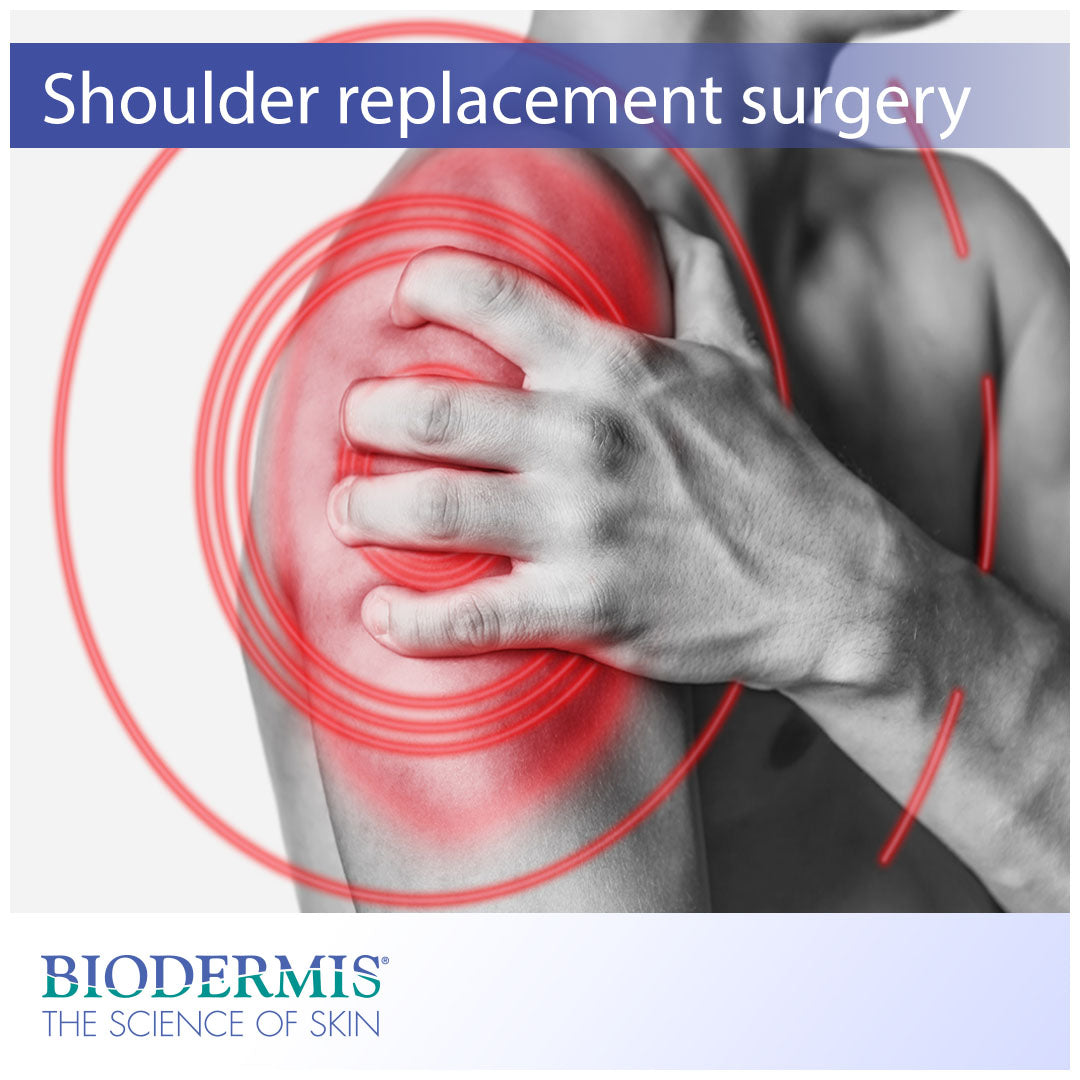A shoulder replacement surgery (shoulder arthroplasty) is an invasive procedure designed to relieve the patient of shoulder pain and reduced motion caused by conditions affecting the shoulder joint. Although shoulder replacements aren’t as common as hip or knee replacements, more and more patients are opting to undergo this procedure as new, more effective techniques have developed. As with any major orthopedic surgery, a patient can expect downtime to recover and some degree of scarring from the incision. For many patients, post-operative scarring can lead to hypertrophic and keloidal scar types. These scar types are considered abnormal and can cause pain and discomfort. However, there are steps you can take to reduce scarring after your surgery, and medical-grade products are easy to obtain.
Continue reading to learn more about shoulder replacement surgeries and discover what you can do to minimize post-surgical scars.
What is shoulder replacement for?
The main reason people elect to have a shoulder replacement is due to the development of arthritis, but severe fractures and tendon tears may also necessitate surgery. Arthritis generally occurs as the body ages and the cartilage that lines our joints wears down. Cartilage acts as a cushion between two bones. When the cartilage deteriorates, the bones that it cushioned begin to rub painfully against one another. In the shoulder, the glenohumeral joint is at risk for developing arthritis and subsequent replacement. The shoulder joint is known as a multiaxial joint because it allows for rotation a movement in several directions, making it the most flexible joint in the human body. Because we rely on our shoulders for a diverse range of motions, it’s easy to see why injury or arthritis can severely limit the shoulder’s flexibility and warrant surgery.
As the name suggests, a joint replacement is meant to replace the existing damaged joint with an artificial joint known as a prosthesis. A prosthesis is designed to act as the joint it replaces, restoring movement and reducing pain in the damaged area. Depending on the condition of your shoulder, your surgeon will assess it for one of the following procedures: total, partial, or reverse shoulder replacement. A total replacement replaces the entire joint (ball and socket). A partial replacement only replaces the ball, which is the head of the humerus bone. A reverse replacement is generally done for patients with a rotator cuff tear. During this procedure, a prosthetic metal ball is attached to the bones in your shoulder.
Continue reading to learn more about shoulder replacement surgeries and discover what you can do to minimize post-surgical scars.
What is shoulder replacement for?
The main reason people elect to have a shoulder replacement is due to the development of arthritis, but severe fractures and tendon tears may also necessitate surgery. Arthritis generally occurs as the body ages and the cartilage that lines our joints wears down. Cartilage acts as a cushion between two bones. When the cartilage deteriorates, the bones that it cushioned begin to rub painfully against one another. In the shoulder, the glenohumeral joint is at risk for developing arthritis and subsequent replacement. The shoulder joint is known as a multiaxial joint because it allows for rotation a movement in several directions, making it the most flexible joint in the human body. Because we rely on our shoulders for a diverse range of motions, it’s easy to see why injury or arthritis can severely limit the shoulder’s flexibility and warrant surgery.
As the name suggests, a joint replacement is meant to replace the existing damaged joint with an artificial joint known as a prosthesis. A prosthesis is designed to act as the joint it replaces, restoring movement and reducing pain in the damaged area. Depending on the condition of your shoulder, your surgeon will assess it for one of the following procedures: total, partial, or reverse shoulder replacement. A total replacement replaces the entire joint (ball and socket). A partial replacement only replaces the ball, which is the head of the humerus bone. A reverse replacement is generally done for patients with a rotator cuff tear. During this procedure, a prosthetic metal ball is attached to the bones in your shoulder.
After your shoulder replacement surgery, you will need to take some time to recover. You will likely remain in the hospital for up to five days after your procedure. Surgeons generally prescribe pain medication to help their patients endure post-operative swelling and soreness. Physical therapy is a likely option to help you regain mobility in your shoulder. Scarring will result at the incision site which could be measure roughly six inches in length. If you are predisposed to abnormal scar types, you may need some extra help to reduce the appearance and discoloration of your scar.
Through the mechanisms of dermal hydration and collagen regulation, silicone helps promote an ideal environment (homeostasis) for your scars to heal. Medical-grade silicone sheeting and sticks are the first line of defense you should consider to help your scars fade quickly. Silicone for scars is the only clinically-proven topical solution to scar therapy that is recommended by surgeons and dermatologists around the world. Ask your physician today which silicone option is best for your post-operative scars.
Biodermis is an innovative market leader with 30 years of expertise in the medical silicone industry. Visit Biodermis.com today to explore a complete range of scar management and post-operative care solutions.
PHYSICIANS AND MEDICAL PROFESSIONALS: REFER OR RESELL?
Biodermis offers custom tailored referral programs designed to simplify and reduce the cost of your patients' post-op care. Additionally, we offer professional pricing if you opt to retail our products. Give us a call at 800.322.3729, and we will be happy to provide additional details on these programs.



